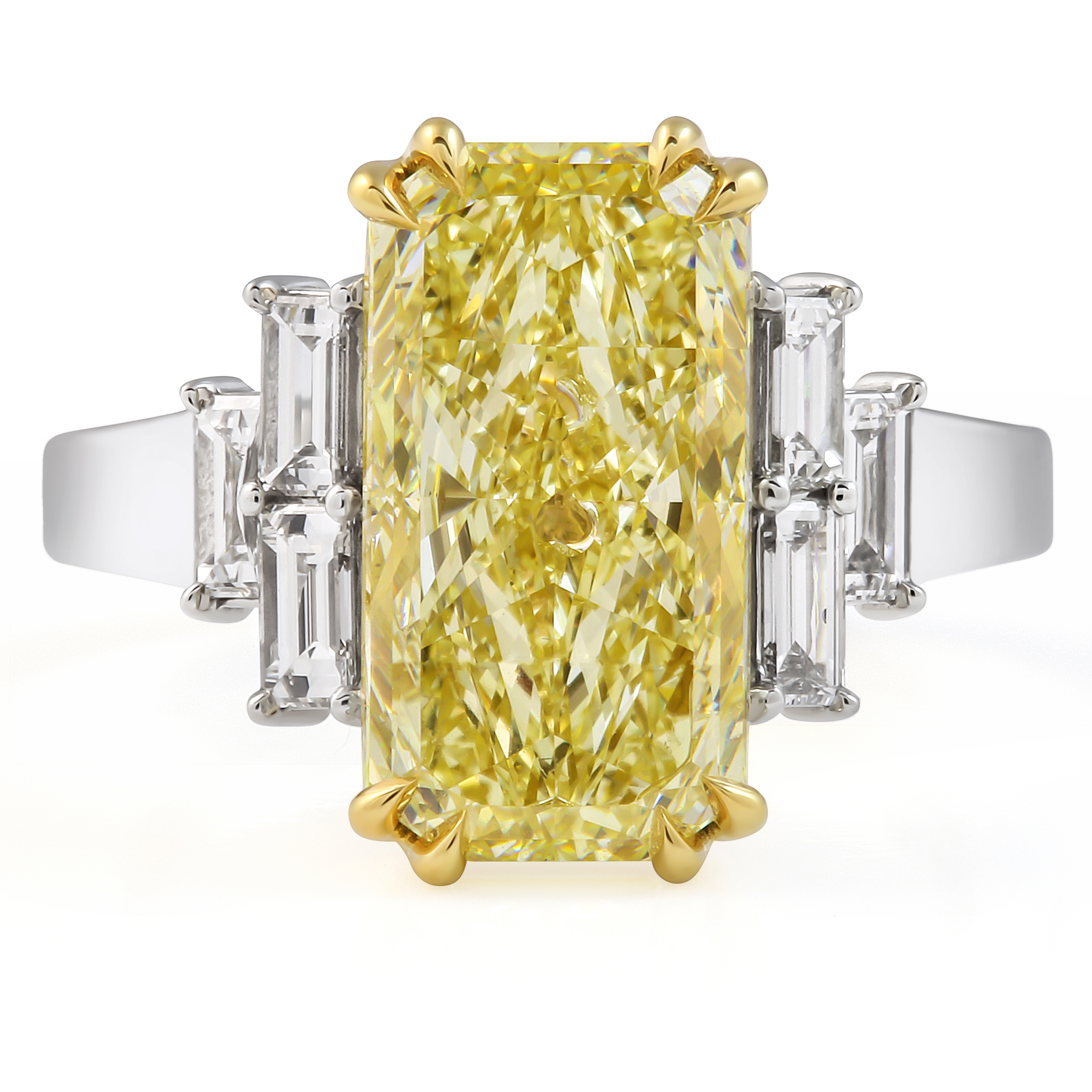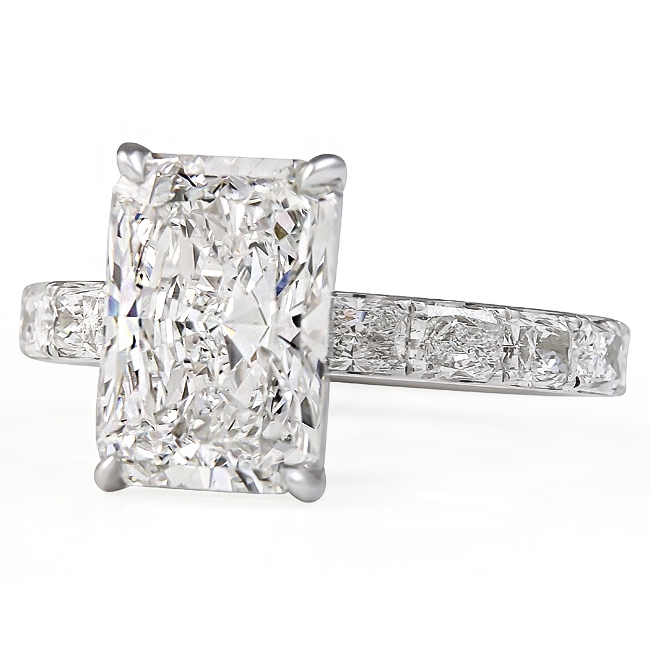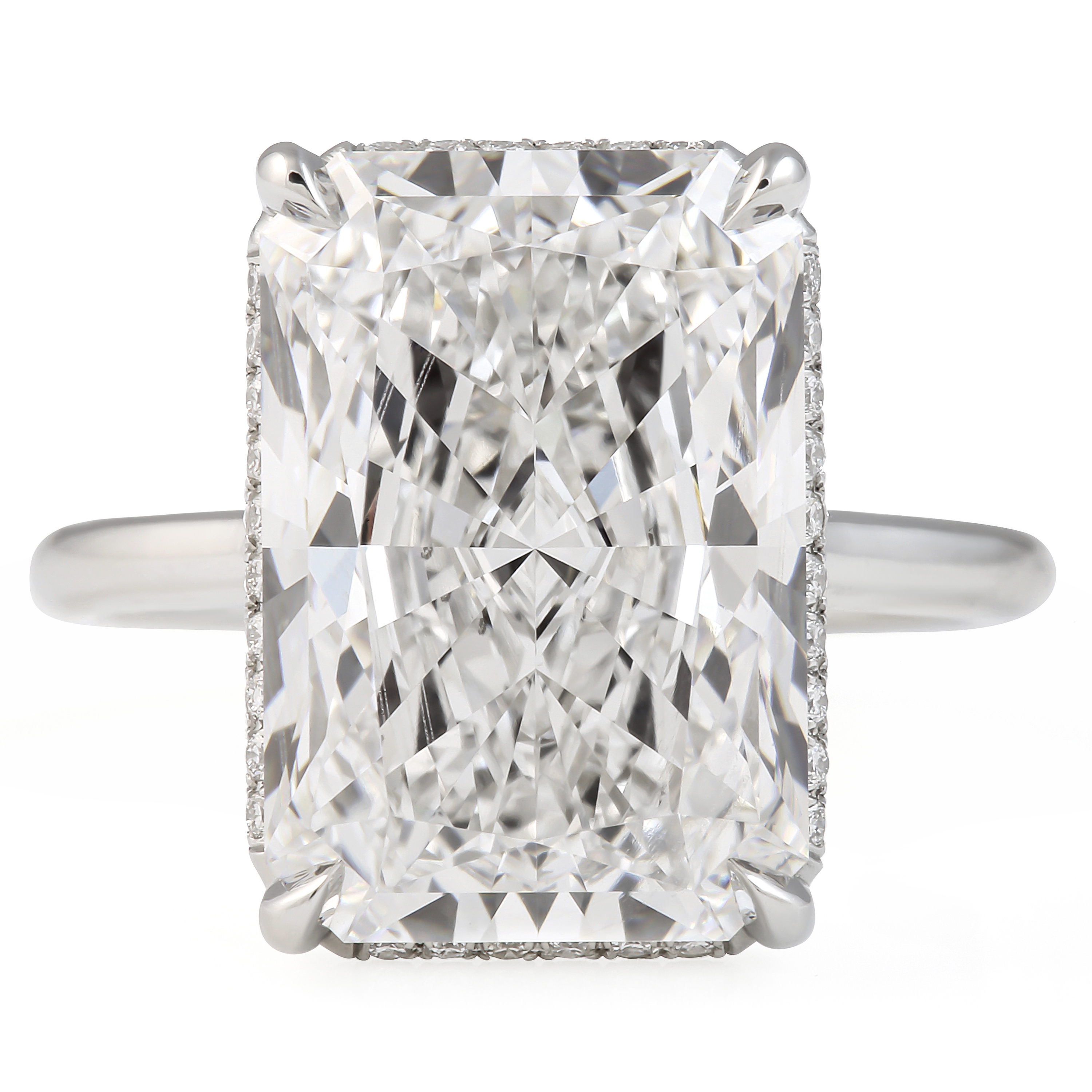Radiant Cut Diamond Engagement Rings
The radiant cut is considered one of the most brilliant diamond shapes available for purchase. 70 intricate facet cuts create ample opportunity for light reflection creating a dazzling, sparkly effect that perpetually catches the eye.


View Some our Favorite Radiant Cut Diamond Engagement Rings
Meet with us in-store at our New York City showroom or shop with us remotely to see more Radiant Cut Diamond Engagement Rings.
- In-Store
- Virtual
Frequently Asked Questions
How does a radiant cut differ from an emerald cut?
Although similar in appearance, there are various factors that set radiant cuts apart from emerald cuts when shopping for engagement rings. Both beautiful, each of these cuts boasts its own unique and distinctive allure. The radiant cut diamond, for example, features a beautiful and brilliant style faceting pattern. Radiant cut diamonds maximize brilliance, making it a popular option for both modern and classic styles. The emerald cut, on the other hand, is distinguishable by its trimmed corners and elongated rectangular shape. Prioritizing features like clarity over brilliance, the emerald cut contains open facets, resulting in a sophisticated and beautiful mirrored effect.
What should I look for when selecting a radiant cut diamond?
Radiant diamonds were created with the purpose of introducing the brilliance that was lacking in square or rectangular shaped diamonds such as asscher and emerald cut. Due to their brilliant faceting, radiant cuts are more forgiving to imperfections than its step cut counterparts. We would leave the minimum color at J and minimum clarity at SI2 only if the diamond is clean to the eye. For an elongated radiant cut diamond, an acceptable length to width ratio would be 1.15:1 all the way up to 1.40:1. For a square radiant cut your ratio is going to be in the range of 1:1 and a little above.
Does a lab-grown radiant cut diamond look better than a natural diamond?
Known for its beautiful, brilliant faceting and eye-catching trimmed corners, the radiant cut diamond combines the sparkle of round brilliants and the elegant shape of an emerald cut. The radiant cut finds its charm in a vibrant play of light. When dealing with a lab-grown radiant cut as compared to a natural radiant cut, it can be difficult to distinguish between the two. Both natural diamonds and lab diamonds share identical physical and optical characteristics, making it impossible to tell the difference by the naked eye. When choosing between natural radiant cuts and lab-grown radiant cuts, to aide your decision will be personal.
Is a lab-created radiant-cut diamond an affordable option?
Due to the formation process being faster than that of a natural diamond, lab-grown radiant cut diamonds are less costly to produce at scale. What used to be a 30% price difference several years ago has now ballooned to about over 75%. Additionally, since natural diamonds are a finite resource, they are far more rare than the infinite number of lab-grown radiant diamonds that can be produced. Over time, the price gap between natural and lab-grown diamonds steepen, with the latter being more affordable.
Does a bezel setting suit a lab-grown radiant-cut diamond?
A bezel setting is a thin line of metal encircling the diamond similar to idea of a halo without the diamonds. Bezel settings evoke a retro feel while radiant cut diamonds are more modern. However, this setting frames the angles of a lab-grown radiant-cut diamond without overshadowing its beauty and protects the edges from damage. If you are on the fence about a full bezel setting, you can always opt for a half-bezel for the best of both worlds!
Learn More Here:
















